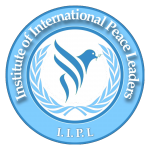Syrian War: A History and Overview on Humanitarian Crisis
By Jannat Irfan and Dr. Austin Mardon
Entire cities were levelled, hospitals were targeted, historic monuments were demolished, and 13 million people were forced to flee their homes. The 11-year-long Syrian civil war, which has ravaged the nation, triggered a worldwide humanitarian catastrophe, and drew in powers as diverse as the United States and Russia, looks to be drawing to a close. President Bashar al-Assad appears to have emerged militarily triumphant from the conflict, which began in 2011 after his regime forcefully suppressed civilian uprisings. He has the support of Iran and Russia. The ensuing armed insurrection quickly transmogrified into a regional and international battle, with extremist Islamist organizations seizing control of massive swaths of the country at the peak of the war, only then to lose this in the face of substantial amphibious assaults by pro-government troops and an U.s.-based alliance of Western militaries. They had to stop counting the dead at one point because the combat turmoil made it impossible to do so. However, the conflict continues, and people continue to perish.
As the world grapples with the COVID-19 epidemic and the attack on Ukraine, the blazing conflict in Syria may not be front-page news, but Syrians continue to suffer as much as ever a decade after the war began, and finding a solution is more important than ever, especially following the attack on Ukraine. In 2020, the return of high-intensity combat in Idlib triggered yet another humanitarian disaster, driving waves of refugees toward the Turkish border and adding to the war’s already massive humanitarian cost. The death toll is projected to be about 400,000 people, but that’s just an estimation and it might be way higher. More than half of the country’s population was displaced at various stages throughout the conflict. According to the UN Refugee Agency, 5.6 million people have fled Syria, with an estimated 13.1 million people in need of aid. This figure is expected to climb if the conflict does not cease, and the humanitarian catastrophe will continue if Syria does not find the resources to begin rebuilding especially because right now, Syrians are facing their greatest economic crisis since the conflict began, and are driven by a range of factors which include the COVID-19 pandemic and the economic collapse in neighboring Lebanon. This has caused record levels of food insecurity and fast-rising basic commodities costs. Simultaneously, 5 million Syrians are already affected by the water shortage because there isn’t enough water to keep the lights on in the region, putting health institutions, such as hospitals at risk. This absence of safe drinking water has increased the danger of sickness and the spread of COVID-19. Moreover, chronic water shortages for agriculture would drive Syrians to abandon their farmlands and cattle, ruining their livelihoods and self-sufficiency while aggravating the famine crisis.
Although violence has diminished since the conflict’s peak, residents and infrastructure in frontline areas continue to be at risk. A huge military assault on territories not under government control is always a possibility. Even if the conflict ends, Syria would take years to recover, and Bashar Al-Assad will be faced with the task of reconstructing the nation, including places where he is suspected of using chemical weapons against his civilians. Furthermore, they will require a significant amount of money and resources to recover from the ongoing humanitarian disaster and the collapse of their economy.
References:
The facts: What you need to know about the Syria Crisis. Mercy Corps. (2021, March 15). Retrieved March 21, 2022 https://www.mercycorps.org/blog/quick-facts-syria-crisis
BBC. (2022, March 15). Why has the Syrian War lasted 11 years? BBC News. Retrieved March 21, 2022 https://www.bbc.com/news/world-middle-east-35806229
Crisis in Syria: Economic crisis compounds over a decade of war. International Rescue Committee (IRC). (2022, March 15). Retrieved March 21, 2022, from https://www.rescue.org/article/crisis-syria-economic-crisis-compounds-over-decade-war
Editors, T. (n.d.). The Syrian Civil War’s never-ending endgame. The Syria Civil War Might Be Ending, but the Crisis Will Live On. Retrieved March 21, 2022, from https://www.worldpoliticsreview.com/insights/28041/the-syria-civil-war-might-be-ending-but-the-crisis-will-live-on
Al Jazeera. (2021, March 14). Syria – is it a war without end?: Start here. Bashar al-Assad | Al Jazeera. Retrieved March 21, 2022, from https://www.aljazeera.com/program/start-here/2021/3/14/syria-is-it-a-war-without-end-start
Hubbard, B. (2020, June 15). Syria’s economy collapses even as civil war winds to a close. The New York Times. Retrieved March 21, 2022, from https://www.nytimes.com/2020/06/15/world/middleeast/syria-economy-assad-makhlouf.html
United Nations High Commissioner for Refugees. (n.d.). Syria emergency. UNHCR. Retrieved March 21, 2022, from https://www.unhcr.org/syria-emergency.html#:~:text=After%2010%20years%20of%20crisis,crisis%20continues%2C%20hope%20is%20fading
Reid, K. (2021, July 13). Syrian refugee crisis: Facts, faqs, and how to help. World Vision. Retrieved March 21, 2022, from https://www.worldvision.org/refugees-news-stories/syrian-refugee-crisis-facts
About Writers:
Jannat Irfan is an article writer at the Antarctic Institute of Canada and is student at University of Toronto pursuing a Bachelors of Science in Biology
Austin Mardon, PhD, CM, FRSC, is an Adjunct Professor in the Faculty of Medicine and Dentistry at the University of Alberta.
